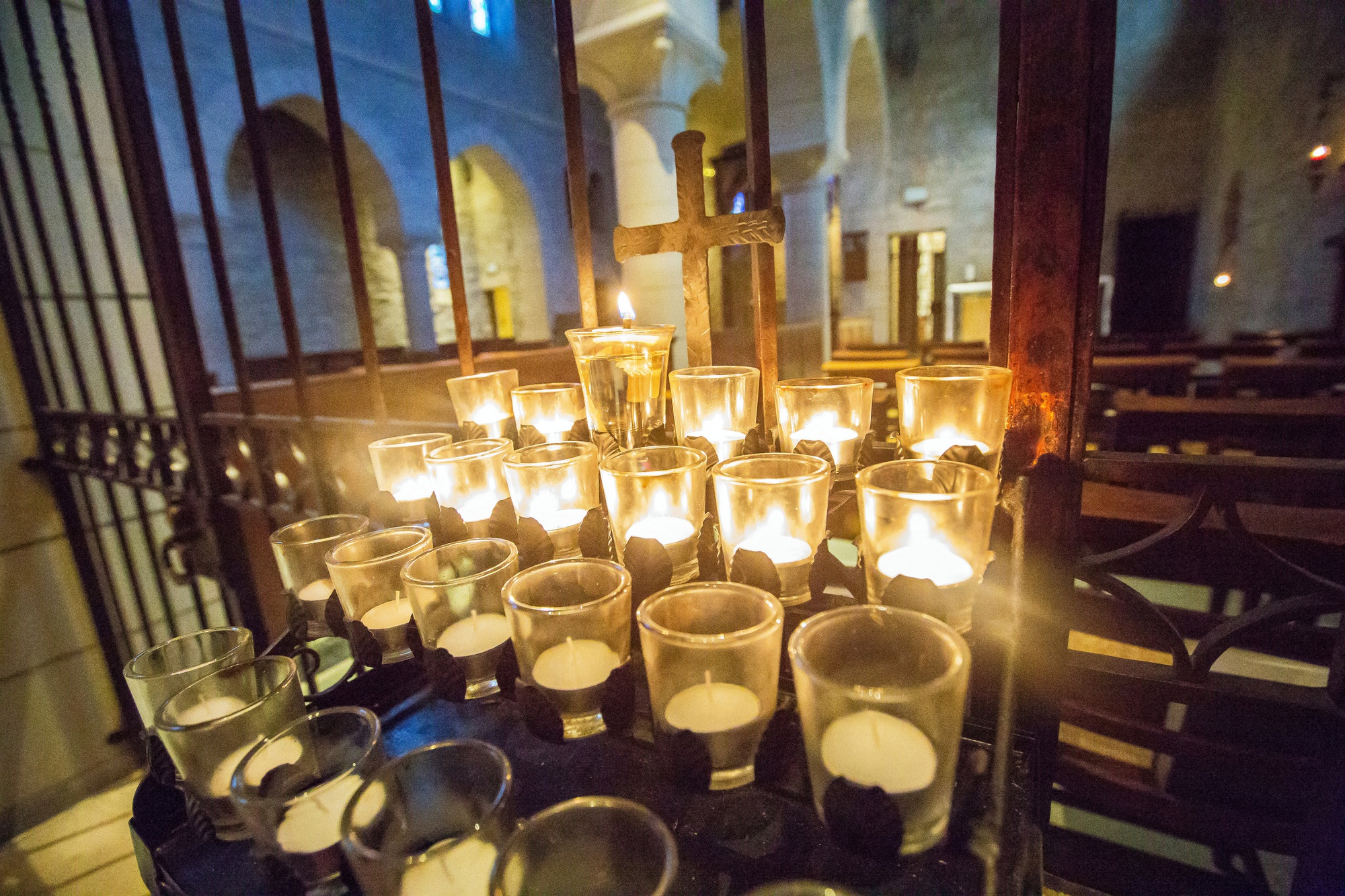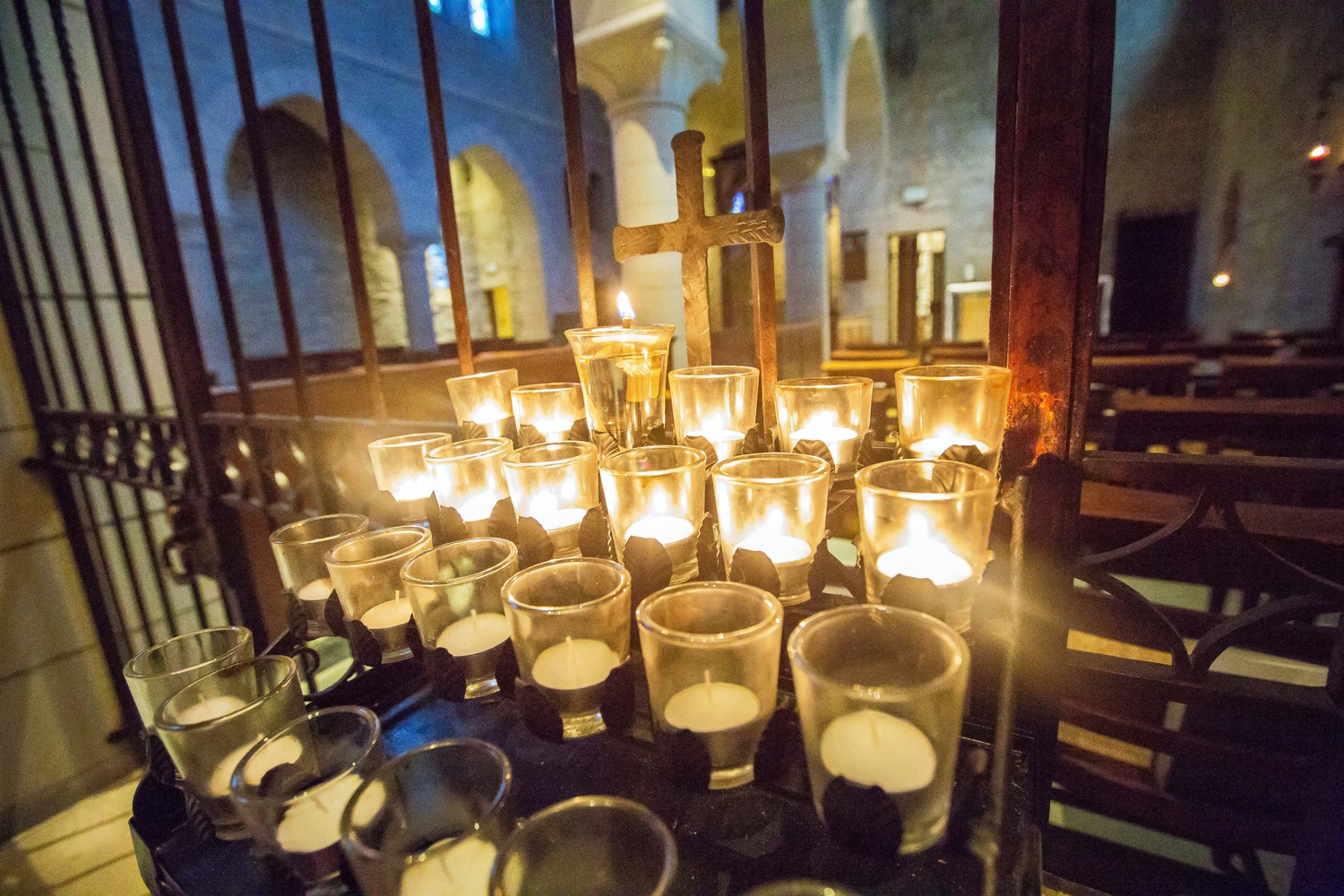
Compline on the Red Line
It is an hour before dawn, and I am at a monastery. I have just walked into a massive stone room, accented by vaulted ceilings and dark stained-glass windows. An iron partition divides the room in two: On one side, there’s a cluster of laypeople and on the other, some monks, a nun, and a handful of Episcopalians.
I had hoped to observe the morning prayer ceremony at the Society of St. John the Evangelist from a distance, but I do not go unnoticed. One of the brothers, an older man in a long black robe, waves me over.
I am not a monk. Am I allowed to cross the partition? That seems like a big deal. There are, after all, a lot of serious-looking people across the other line. One of the brothers is walking slowly up the aisle, carrying a candle. There is no sense of time across the iron bars—his movements could have taken place 1,000 years ago.
The monk gestures to me again.
I put down my backpack, step over the barrier, and sit next to the monk. The monk stands slowly and hands me an enormous black binder. This sanctuary offers no hiding places. Everyone holds a black binder, and everyone is absolutely still.
The morning service is silent, save for the muffled sounds of traffic whizzing by. Although it neighbors the Kennedy School, the monastery has an ancient, unmoving air about it. One of the monks speaks softly in a clear voice that echoes off the stones of the room. We respond solemnly with words from the rites in the black binder. Well, everyone else does; I open to the wrong page. I attempt to mouth the correct words.
One of the brothers begins to beautifully, hauntingly sing a single note. The other side of the sanctuary chants a verse of the Psalms before resting. The sounds of breath and voice are amplified by the walls; even in the silence, the room is full of sounds. There is a profound sense of awareness among the chanters: They move together; they breathe together; they sing in perfect unison.
Although I never manage to find the right page, the monk who waved me into the service—Brother Jim Woodrum, a white-haired Tennesseean—invites me to come back for lunch later that week. I have no idea what to expect.
When I return to the monastery on Friday, we feast on spectacular blackened salmon, a garden salad with artichokes and pecans, collard greens, and corn on the cob. We eat in silence while a brother reads not the Bible, but a history book about American immigration.
“We believe that silence is the greatest gift we have to offer,” the SSJE website states. It’s a sentiment that Brother David B. Vryhof echoes in our conversation before lunch. He left a successful career as a teacher for deaf students because he “was looking for a life that was based in prayer.”

Although the future of monastic life is uncertain as the monastery enters its 150th year, Vryhof remains rather unconcerned. “There are always going to be people who are drawn to living in this very intentional way,” he says. The 15 brothers take vows of poverty, celibacy and obedience, yet none tell me they feel constrained.
The decline in religious attendance concerns Vryhof more. “I think it’s a response to the ineffectiveness of religious institutions,” he says of the recent movement towards spirituality without religiosity. He adds, “[There are some] religious institutions that have not been sources of life.” To the brothers, the monastic lifestyle is an antidote. Their days feature extended sessions of deep silence and meditation, but there also exists a strong community among them.
Monastic life has evolved with global culture. “The rule had things like a brother should not ride in a car alone with a woman,” Vryhof says of the monastery back in its earlier days. “You were supposed to sit in the hardest chair available.” These days, the monks enjoy softer chairs, warm friendships, and delicious salmon together.


